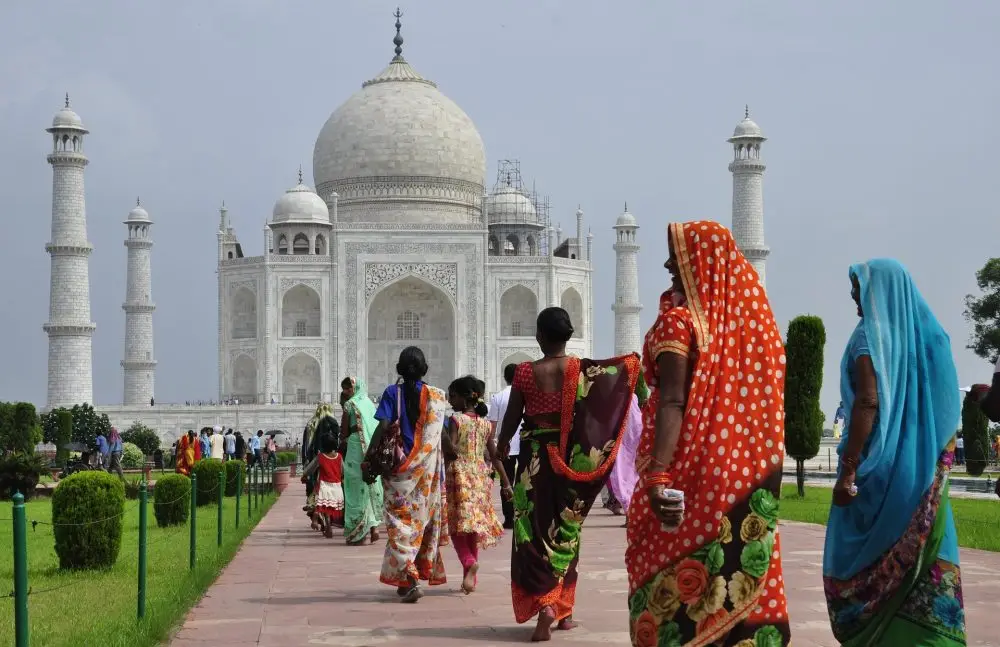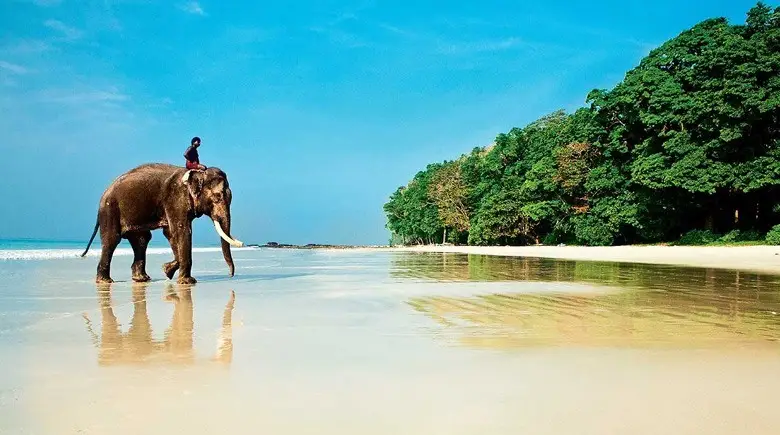A trip to India requires a special approach to packing. The climate, culture, transportation infrastructure, and religious peculiarities dictate their own rules. Standard tourist recommendations do not fully apply: it is important not only to fit everything in your luggage but also to take into account the nuances of local customs. To avoid mistakes, it is worth carefully planning how to pack your suitcase for vacation, taking into consideration the realities of everyday life in India and local traditions.
How to Pack Your Suitcase for Vacation in India: Adapting to the Cultural Context
Traveling in India involves visiting temples, ashrams, and religious centers. To avoid awkward situations, it is important to study the rules of behavior in advance. Shoes are not allowed in temples, and legs and shoulders should be covered. Therefore, the wardrobe should be assembled not based on a “beach vacation” principle but considering the traditional way of life.

This is where the question of how to pack your suitcase for vacation becomes relevant, to be appropriate in any situation — from excursions to evening rituals on the banks of the Ganges. Universality and respect for local culture are the two main criteria.
Route Logistics and Climatic Conditions
When planning a trip to India, it is important to consider temperature variations, high humidity levels, and sudden changes in surroundings. In one day, you can find yourself on a scorching street in Delhi, in a cold compartment of a night train, and in the cool shade of a temple complex. Packing should take into account not only transportation but also religious etiquette, especially when visiting sacred sites.
Indian weather is unpredictable: heat can be followed by a tropical downpour, and an air-conditioned bus can turn into a stuffy market. In such conditions, it is especially important to understand how to pack your suitcase for vacation so that your items are versatile and easily mix and match.
Clothing and Wardrobe for the Indian Rhythm
Clothing for India should be light, breathable, but cover the shoulders, chest, and knees. This applies to both men and women, especially in areas with heightened religious sensitivity. Natural fabrics such as cotton, linen, and viscose provide comfort in the heat and allow the skin to breathe. It is better to choose light colors — they heat up less and do not attract excessive attention.
A must-have item is a long scarf or shawl: it can replace a head covering in a temple, protect from the sun, and serve as a cover-up. It is also advisable to have at least two pairs of loose trousers and spacious t-shirts — one for strolls, the other for moving around in transportation.
Footwear and Tips for Choosing
One of the most important questions is how many pairs of shoes to take on the trip? The answer depends on the itinerary. Comfortable sandals with soft soles are suitable for city trips. If excursions beyond the metropolises are planned, it is better to take trekking sneakers. Another pair — simple flip-flops or sandals for showers and the beach.
Footwear should be easy to remove: in India, this is done before entering many buildings, especially temples and homes. The approach to choosing footwear should be not only comfortable but also practical in terms of how often you need to change shoes.
Avoiding Excess Weight: Packing Tips for Your Suitcase
Moving between Indian cities often happens on buses, trains, or low-cost carriers, where there are strict baggage weight restrictions. Each item should be justified. The bulkiest items — jackets, hoodies — are better worn on the plane. A classic life hack is to redistribute items into your carry-on to avoid exceeding the weight limit during boarding.
Minimalism should also apply to accessories. It is appropriate to take one versatile shoulder bag, a lightweight backpack for excursions, and a compact waist bag for your passport, phone, and cash. These solutions fit perfectly into the logic of how to pack your suitcase for vacation rationally — without overloading, but considering all practical needs during the journey.
Cosmetics and First Aid Kit: What Is Really Useful?
Hygiene in India is a separate topic. Public toilets often lack soap and paper towels, so a personal supply is not a whim but a necessity. Cosmetics should be basic, heat-resistant, and compact. It is advisable to take care products in small bottles or transfer them to travel-sized containers.
As for the first aid kit, the question of how to pack it compactly for the trip is especially relevant. In India, you can buy most medications, but not always of the desired quality. It is important to have with you:
- remedies for digestive disorders and poisoning;
- mosquito repellents and after-bite products;
- fever reducers, antiseptics, plasters;
- medications based on individual needs;
- basic vitamins and electrolyte solutions.
A compact first aid kit significantly simplifies adaptation and helps avoid unnecessary stress associated with searching for a pharmacy in an unfamiliar area. When deciding how to pack your suitcase for vacation, this basic set of medications should be a mandatory item — especially for remote regions.
Checklist of What to Take on Vacation: How to Pack Your Suitcase Correctly
A well-organized checklist eliminates chaos and simplifies preparation. Below is a universal structure adapted to Indian realities:
- clothing — 3-4 sets for hot weather, 1 for cool evenings, 1 for temples;
- footwear — sandals, sneakers, flip-flops;
- hygiene — antiseptic, wipes, mini cosmetics;
- first aid kit — basic supplies, personal medications, repellent;
- electronics — charger, adapter, power bank;
- documents — passport, insurance, copies, photos;
- accessories — sunglasses, scarf, water bottle, headphones.
The list is universal and suitable for both short tours and long journeys — just adjust the amount of items based on the trip’s duration. Such a flexible approach is especially important if the goal is to understand how to pack your suitcase for vacation without overloading, but considering all needs during the holiday.
What to Pack in Your Carry-On for a Flight to India
A long flight to India requires careful preparation of your carry-on baggage. It is especially important to include items for individual comfort and protection. It is advisable to include:
- spare underwear and socks;
- a lightweight t-shirt;
- wet wipes and mini cosmetics;
- documents and ticket;
- charger and headphones;
- basic medications;
- a light snack and water.
Carry-on baggage is the foundation of peace of mind at the airport, especially if the flight is delayed or your checked baggage is sent elsewhere.

Conclusion
Understanding how to pack your suitcase for vacation, especially in India, ensures not only comfort but also respect for the country you are visiting. Harmony between cultural peculiarities, weather conditions, and logistics shapes a new style of traveler — light, flexible, and ready for anything. India demands respect, which means paying attention to details, modesty in wardrobe, and practicality in organizing luggage.
A thoughtfully packed suitcase transforms a vacation not into a struggle with circumstances but into a flow of experiences — vivid, rich, and liberating.
 en
en  ar
ar  de
de  es
es  fr
fr  nl
nl  hi
hi  it
it  pt
pt  el
el 



